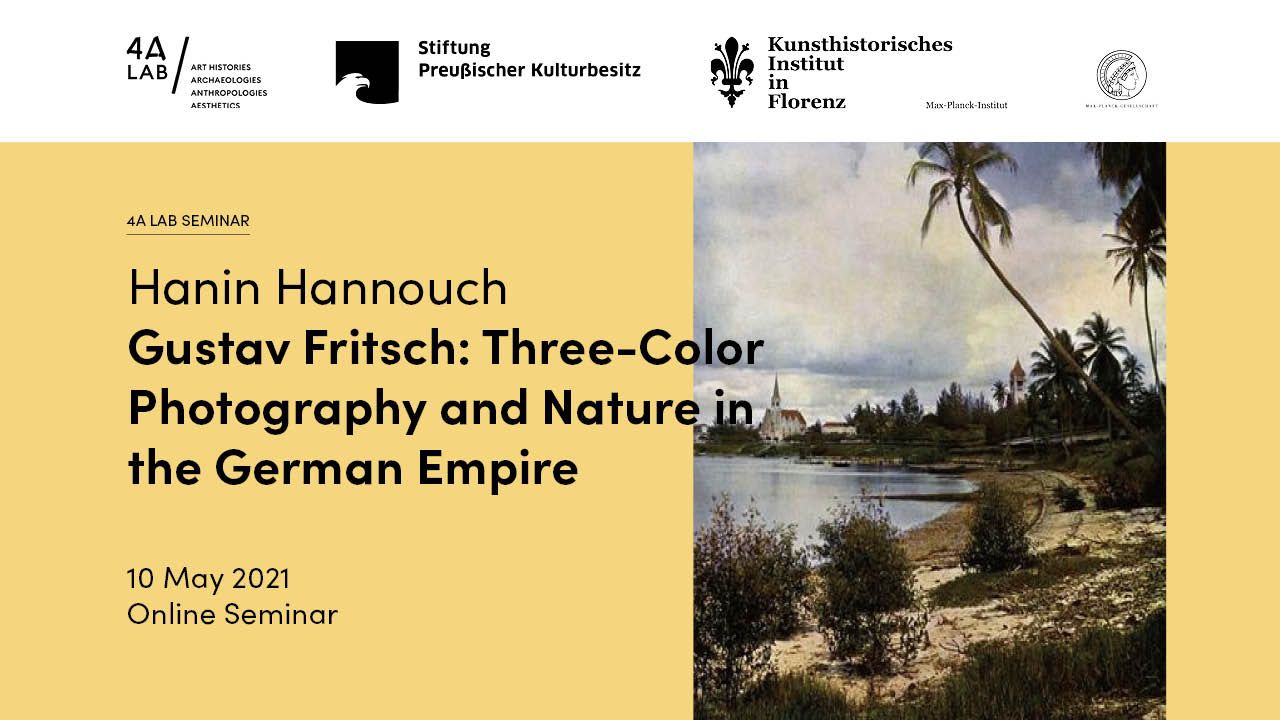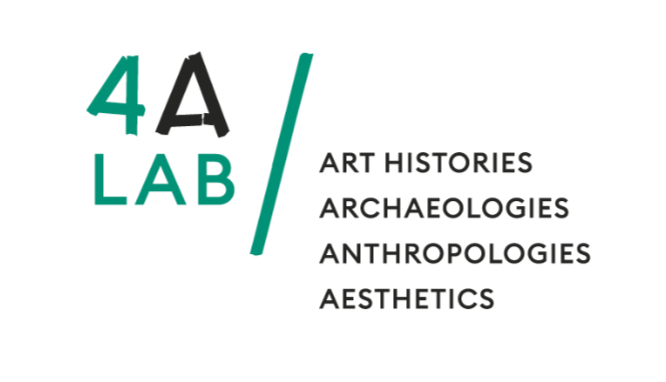Historiography, Media Library, Photographs, Technologies
VIDEO: Gustav Fritsch: Three-Color Photography and Nature in the German Empire, by Hanin Hannouch
In this talk, art historian Hanin Hannouch traces Gustav Fritsch’s (1832–1927) preoccupation with three-color photography and its complex relationship to “nature” in the Kaiserreich. The event took place on May 10, 2021 in the framework of the 4A_Lab online seminar series.
25.04.2022

In her talk, Hanin Hannouch analyses the different biological, anthropological, and photographical strains of research that converged into the work of German anthropologist and racial hygienist Gustav Fritsch (1832–1927). Mostly known as a foundational figure in the use of (monochrome) photography as an investigative tool of anthropology and for his experiments with neurologist Eduard Hitzig (1838–1907) on the excitability of the brain and the localization of the motor cortex (all ca. 1870), Fritsch’s preoccupation with three-color photography and color vision at the turn of the 20th century has received almost no scholarly attention.
Fritsch considered the photographic plate to be the equivalent of the retina. In doing so, he initially followed the analogy between the camera and the human eye—an analogy that, since the advent of photography, had shaped the way in which vision was thought to operate. In order to improve the color photographic process, he also conducted a histological study of human and animal retinas, which he illustrated using three-color photomicrographic images. Expanding the paradigm of mechanical objectivity, he claimed that the results of his inquiry (as with most investigations about color photography), directly stemmed from an animated and active agent—which he identified as the personification of Nature. Hence, three-color photography was purported to be en emanation of nature itself.
What is more, Fritsch participated in the widely successful two-volume color photobook Die Deutschen Kolonien (edited by Kurd Schwabe, published by Carl Weller, 1910). In keeping whis his claims, he framed the book’s color photographs of landscapes, taken by Robert Lohmeyer in the colonies of the Kaiserreich, as Nature’s own self-portraits. Landscapes were considered emblematic of color photography’s autopoieisis—the ability of nature to clone itself onto the photographic plate—which served to frame Die Deutschen Kolonien as an objective depiction of the colonies. Hanin Hannouch’s talk explores the numerous aesthetic and political implications connected to the circulation of notions about nature and vitalism from anthropology to popular ethnography via color photography, and reveals the entanglements between three-color photography and colonial science in the light of the colonial project.
The talk “Gustav Fritsch: Three-Color Photography and Nature in the German Empire“ took place on May 10, 2021 in the framework of the 4A_Lab seminar series.
